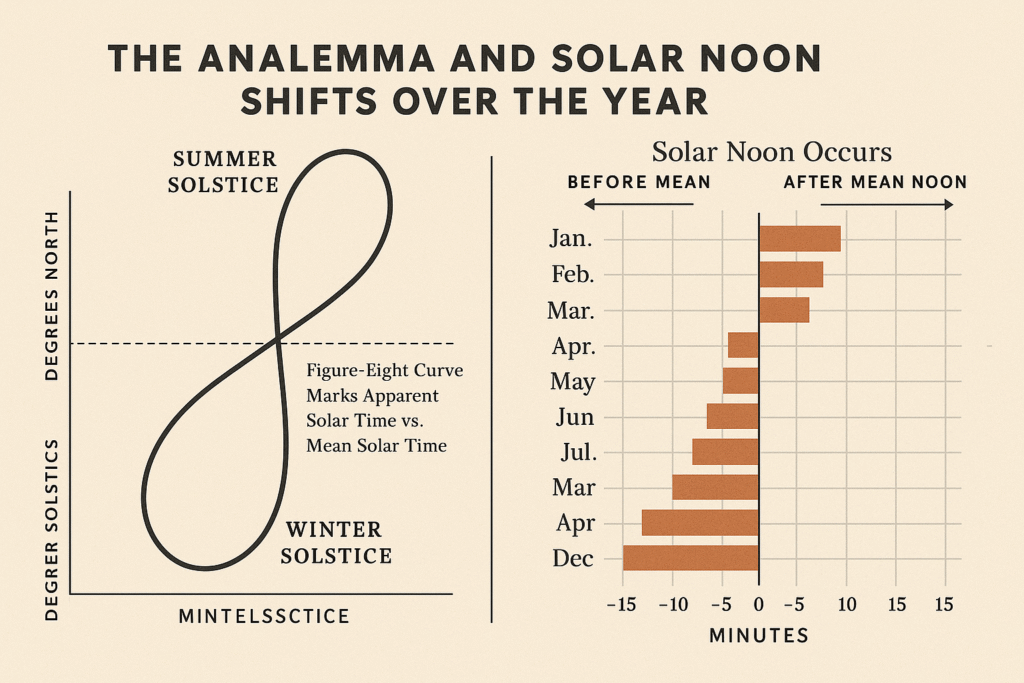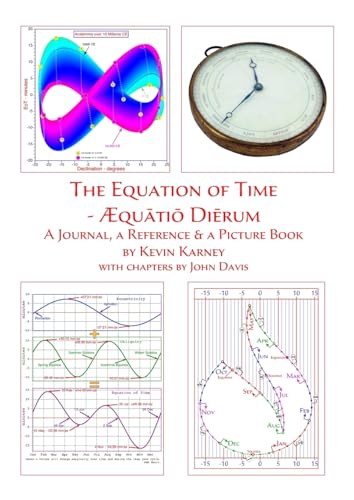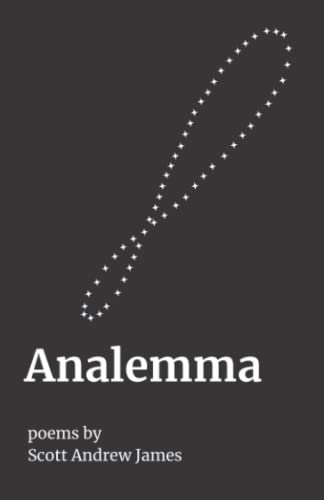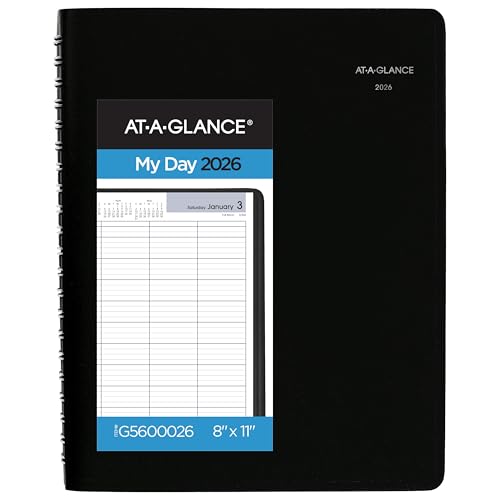The equation of time
The equation of time
Is the difference
Between the position of the sun
And the time on your clock
Sun time
And clocktime
Are not the same
The analemna of the sun
Is the position of the sun in the sky
Along the days of the year
Her travel into the sky
Does not match
Your watch
Time to adjust our clocks in real time
Sun time and moon time
According to the places we live
Stationary earth
Or stationary sun
Remains an open question
The orbit is not circular (mean sun)
But ecliptic (true sun)
Remember
Time to skip the mean assumptions
And come to true reality
Tilt is not what we believe it is
Nor movement
Nor speed
©️Mlaure

🌞 The Equation of Time: Living in “Real Time” Might Break Your Brain 🕰️
An insightful (and slightly mind-bending) journey into solar time, clock time, and what it would really mean to live like the sun intended.
💡 What Is the Equation of Time?
Let’s start with the basics: The Equation of Time is a way to describe the difference between solar time (what a sundial tells you) and mean time (what your watch says). The two diverge because Earth doesn’t orbit the Sun in a perfect circle and its axis is tilted. That mismatch causes the Sun to appear “early” or “late” depending on the time of year.
In practical terms:
- Sometimes solar noon (when the sun is highest in the sky) comes before 12:00pm on your clock.
- Sometimes it comes after.
- This difference can be as much as +14 minutes or –16 minutes.
So, if you lived your life by solar time — real time — your day would shift ever so slightly… but constantly.
🌀 What Would It Be Like to Live in “Real Time”?
Imagine a world where every day you adjust your clock slightly to track the Sun’s actual position in the sky. Here’s what that might look like:
☕ Morning Coffee, but with Solar Chaos
Your alarm would go off at “true sunrise,” which would get earlier and later throughout the year — but not in a nice, smooth way. The difference in the Equation of Time isn’t linear — it’s lopsided and a bit drunk. Some mornings you’d be up earlier than usual and not know why. Others, you’d feel like you “slept in” even though your body did the same thing.
🕛 Noon That Moves
“Lunch at noon” would be a wobbly concept. On some days, the Sun hits its highest point at 11:44am. On others? 12:14pm. Planning anything around solar noon would make your calendar look like it had a software bug.
🎬 Movie at 6? Maybe?
If you were planning events using true solar time, you’d need an Equation of Time chart just to make sure you show up when everyone else sees the sunset. We’d probably all become amateur astronomers just to schedule dinner.
📉 Why Do We Use “Mean Time” Anyway?
Because we like consistency.
Mean time (aka civil time or clock time) smooths out all those variations. It’s based on the average position of the Sun over the year, so we don’t have to constantly tweak our clocks or miss Zoom calls by 16 minutes.
Without it, running a train schedule or setting international flight times would be like playing a board game with rules that change halfway through each round.
🔍 Is It All Just a Nerdy Detail?
Maybe. But it’s also a beautiful reminder that:
Time isn’t as fixed as we like to pretend.
Every day, we pretend the Sun hits noon at exactly 12:00. It doesn’t. But we trade a little accuracy for a lot of order.
🧠 Thought Experiment: The Solar Clock Society
Let’s say a small off-grid community decided to live entirely by solar time.
- They’d recalibrate clocks daily using sundials or astronomy apps.
- Meal times would shift slowly but noticeably every week.
- Seasonal events (like solstices or equinoxes) would feel more viscerally real.
The upside? They’d be far more in tune with the natural rhythms of the Earth and sky.
The downside? Coordinating a Zoom call with anyone outside their community would be an ongoing comedy.
🛠️ Nerd Corner: The Actual Equation
If you want to calculate the Equation of Time, it’s a complex function based on:
- The eccentricity of Earth’s orbit
- The obliquity (tilt) of the Earth’s axis
There’s a commonly used approximation:
EoT ≈ 7.5 * sin(B) - 9.87 * sin(2B + 3°)
Where B = 360° * (n – 81) / 365
(And n is the day of the year)
But hey, we promised entertainment — not trigonometry class.
⭐ Final Thoughts (and Rating)
| 🕰️ | Equation of Time |
|---|---|
| 🔍 Insight Level | ★★★★★ — It’ll change how you see time. |
| 🤯 Mind-Bend Factor | ★★★★☆ — Subtle but disorienting. |
| 🧭 Practical Usefulness | ★★☆☆☆ — Mostly good for trivia and sundial nerds. |
| 🌞 Cosmic Wonder | ★★★★★ — A real-life celestial quirk hiding in plain sight. |
Summary:
The Equation of Time is one of those quietly profound concepts that humbles our human attempt to tame nature. It’s a mathy nudge from the cosmos reminding us: “Your clocks are convenient lies.” Living in “real time” would be both enchanting and utterly inconvenient — but it might bring us a little closer to the rhythms of the universe.
🗨️ Want More?
Time to explore sundials, explain why the graph of the Equation of Time looks like a lopsided figure-8 (aka the “analemma”), and help you build your own “true time” daily planner.

🔄 PART 1: Why the Graph of the Equation of Time Looks Like a Lopsided Figure-8 (The Analemma)
“What looks like a stretched figure-8 is actually the cosmic signature of Earth’s orbit and tilt etched across the sky.”
🌍 What Is the Analemma?
When you plot the position of the Sun in the sky at the same time each day (say, 12:00pm clock time) over the course of a year, you get the analemma — a stretched, tilted figure-eight.
This shape visualizes two things at once:
- The Equation of Time (east-west “wiggle” of the Sun’s position)
- The Sun’s declination (north-south motion of the Sun through the seasons)
So when you look at an analemma:
- The vertical axis shows how high (north/south) the Sun is in the sky = seasonal change
- The horizontal axis shows how early or late the Sun is = Equation of Time
🧭 Why a Lopsided Figure-8?
Two cosmic quirks make the figure-8 weirdly unbalanced:
1. Elliptical Orbit (Orbital Eccentricity)
Earth’s orbit isn’t a perfect circle — we move faster in January and slower in July.
This throws off the Sun’s “arrival time” each day.
- Result: One lobe of the figure-8 (the winter side) is fatter than the summer side.
2. Tilted Axis (Obliquity)
Earth is tilted at ~23.44°. This changes the Sun’s height in the sky throughout the year.
- Result: The Sun “moves” north and south — that’s the up-down part of the analemma.
3. Timing of the Solstices vs Perihelion
- Earth is closest to the Sun (perihelion) in early January, not at the solstice.
- This causes the timing of the “fastest movement” to not line upwith seasonal transitions — hence, asymmetry.
🔭 Bonus: You Can Photograph It
Photographers can capture the analemma by taking a photo of the Sun from the same spot at the same time every few days for a year. The result? A beautiful glowing figure-8 across the sky. (Often overlaid on a landscape for perspective.)
📅 PART 2: Building a “True Time” Daily Planner
Let’s imagine you’re ready to live by solar time. Here’s how we’d build a planner that respects the Equation of Time.
🔧 Step 1: Decide Your Anchor
Do you want to anchor your day to:
- True solar noon (Sun at its highest point)
- Sunrise
- Sunset
- Or keep civil time and just adjust events?
📝 Let’s assume you want to anchor around true solar noon, the cleanest reference.
🕰️ Step 2: Adjust for the Equation of Time
Each day, solar noon can be early or late by up to ±16 minutes from civil noon.
So you’ll need:
- An Equation of Time table or app (or I can generate one for you!)
- A daily correction to shift your schedule
📌 Example: October 11
- Equation of Time ≈ –13 minutes
- True solar noon = 11:47am (instead of 12:00pm)
You’d shift your entire schedule 13 minutes earlier that day.
🔧 Step 3: Build a Template Planner
Here’s what your “True Time” planner might look like — anchored to solar noon, dynamically adjusted:
| Event | Relative to Solar Noon | Example Time (Oct 11) |
| Wake Up | –4 hours | 7:47am |
| Morning Walk | –3 hours | 8:47am |
| Lunch | 0 (Solar Noon) | 11:47am |
| Work Block | +1 hour | 12:47pm |
| Break | +2.5 hours | 2:17pm |
| Dinner | +5 hours | 4:47pm |
| Wind Down | +7 hours | 6:47pm |
Each day, you’d shift all these based on that day’s Equation of Time.
📆 Tools to Make It Work
🌐 Digital Support:
- Apps: SunCalc, Time and Date, or astronomy apps that give solar noon and EoT daily
- Google Sheets Planner: Add a formula with a lookup table of EoT values per day and shift your events automatically
🖨️ Paper Planner:
Design a calendar with a vertical time axis centered on true solar noon, with movable sliders or annotations.
✨ Benefits of Living by True Time
- You become highly aware of natural light rhythms
- Seasonal shifts feel real, not abstract
- You notice subtle things: the sun’s arc, shadows, golden hour
- It’s a step toward eco-temporal mindfulness (yes, we’re coining that term)
🌀 Wrapping It Up
The analemma isn’t just a weird solar doodle — it’s Earth’s orbital fingerprint.
Living by true time isn’t just eccentric — it’s a way to re-sync with the cosmos.
Whether you’re just nerding out or ready to change how you live your days, you’re engaging with something deeper than timekeeping — you’re wrestling with the difference between nature’s rhythm and human control.









